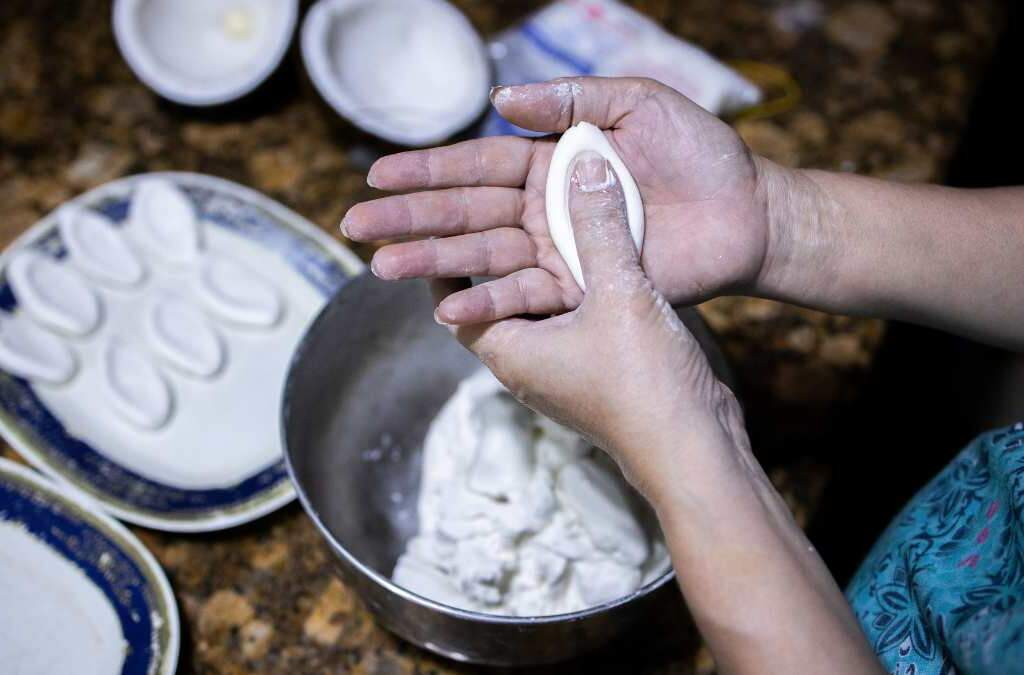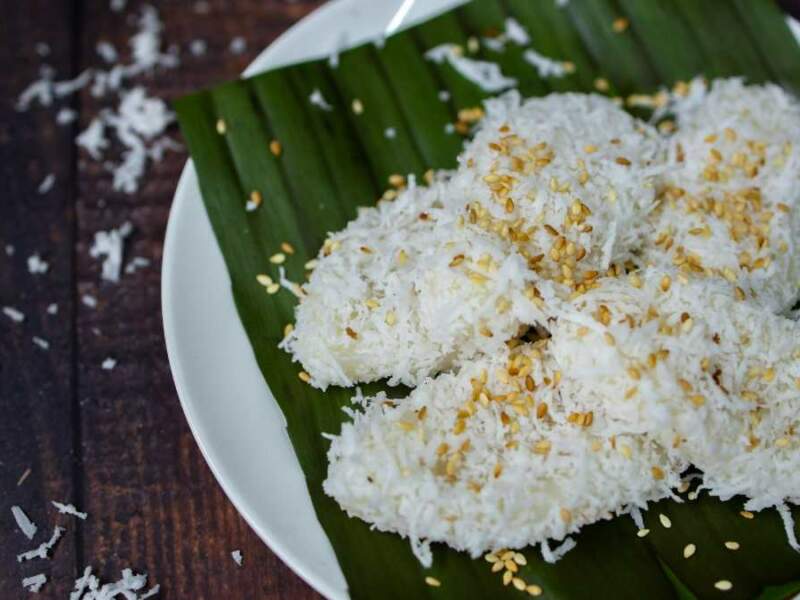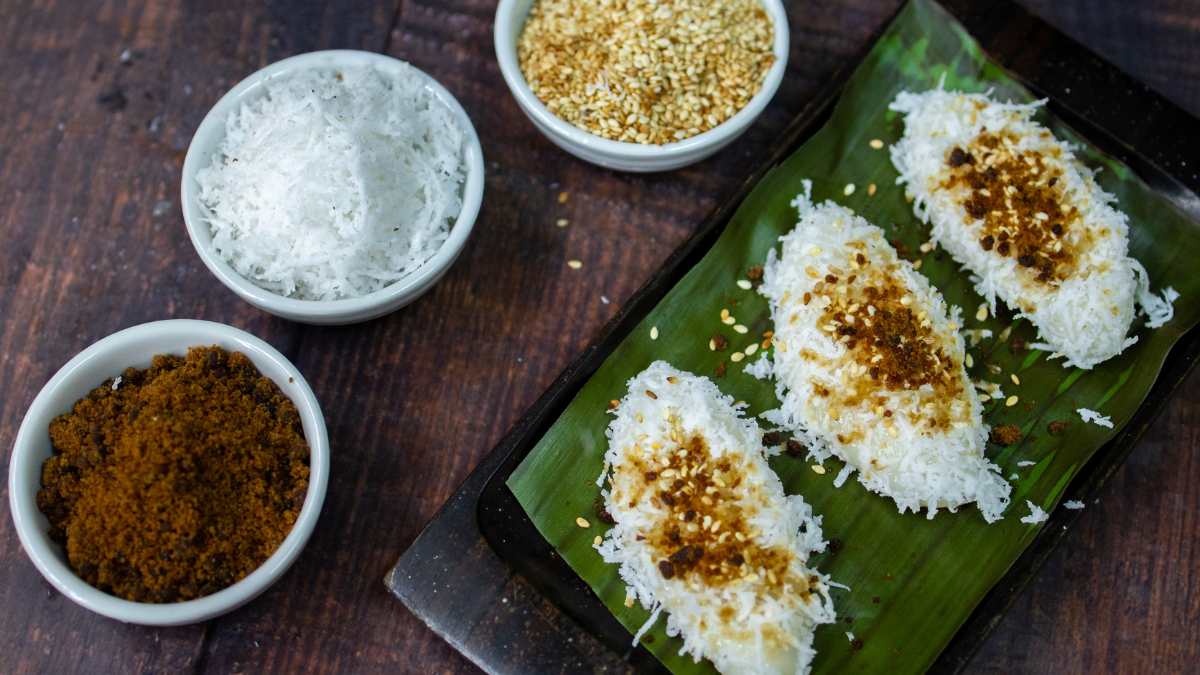Hey everyone, it’s April again! Since my last post on ginataang bilo bilo using the instant pot was so well received, I thought I’d share another traditional Filipino kakanin recipe made using appliances. This time it’s palitaw – those delightful sticky rice balls often served during religious festivals such as Holy Week or Easter. They’re also a hit on family gatherings and reunions.
For those unaware, palitaw are bite-sized taho-like spheres made from sticky rice flour. Traditionally they’re boiled to perfection but that can be stressful trying to make sure they don’t stick or fall apart. A while back I wondered if my rice cooker could do the job, and let me just say – problem solved!
To make the dough, I followed the basic ratio of one cup sweet rice flour mixed with just enough water to form a firm but pliable dough. Kneading it by hand is still best in my opinion to develop the gluten. Once smooth, I rolled portions into about 1/2 inch balls and lined them up neatly on the rice cooker tray.
Storytime! If you have kids, this is the best time to invite them to learn a bit of our heritage cuisines. I’ve found one of the best ways to get kids interested in their heritage is by involving them in simple food preparation. Any chance I get, I try to have my daughter help me make kakanin and other Filipino treats. Not only is it quality bonding time, but it also teaches them vital skills in the kitchen.
For palitaw making, I’ve started letting my daughter roll the dough balls since she was six. Of course they might not be perfect spheres, but she took such pride in her creations. When she was about 3, she liked to “help” by dumping ingredients into bowls – with plenty of spills but lots of giggles too. For kakanin that involve molds or shapes like puto, they fight over who gets to push the mixture into the forms.

Anyway, at this part, the real magic begins – I filled the rice cooker with just enough water to cover up to half of the inner pot. Then I simply placed my rice cooker steamer tray of palitaw balls directly on top, shut the lid and selected the “steam” setting. In almost no time the machine switched to “warm” mode, indicating the palitaw were done!
I checked on one and it was lightly chewy on the outside but tender inside – cooked to perfection without any risk of sticking like on the stovetop. Best of all, I was free to work on other things while the rice cooker did all the boiling for me hands-free.
After removing them from the cooker, I tossed the warm palitaw in roasted sesame seeds to give them a beautiful golden coating. They were so delicious enjoyed warm with homemade taisan or sikwate. The perfect snack that was surprisingly easy to whip up using a common appliance already in my kitchen.
Give this rice cooker method a try yourself and let me know if you have any other questions! Wishing you all a Merry Christmas and a Happy New Year!.

Ingredients
Shopping List
- 2 cups glutinous rice flour
- ½ cup granulated sugar
- ½ cup sesame seeds, roasted
- 1 cup grated coconut
Pantry
- 1 cup water
Instructions
- Begin by combining the glutinous rice flour with water in a mixing bowl. Stir and knead until you have a smooth dough.
- Take about 2 tablespoons of dough and mold it into a ball. Then, gently flatten each ball using your palms to create a disk shape.
- Instead of boiling water in a pot, fill your rice cooker with enough water to cover the balls. Place the flattened dough pieces into the rice cooker tray. Turn it on and set to steam function.
- Once the rice cooker switch to "warm function" carefully remove them from the rice cooker and let them drain on a wire rack or a plate lined with paper towels. Allow them to cool slightly.
- In a separate bowl, mix the granulated sugar with the roasted sesame seeds. Ensure the mixture is well combined.
- Roll each rice cake first in the grated coconut, ensuring it's well coated. Then, roll them in the sugar-sesame seed mixture for a sweet and nutty exterior.
- Arrange the Palitaw Balls on a serving plate. They're now ready to be enjoyed as a delightful snack or dessert!
Notes
Tips and Tricks
Consistency Check: The dough should be pliable but not too sticky. If it's too dry, add a bit more water; if too wet, add a little more flour.
Safety First: Be careful when handling the hot rice cooker and when removing the cooked balls.


